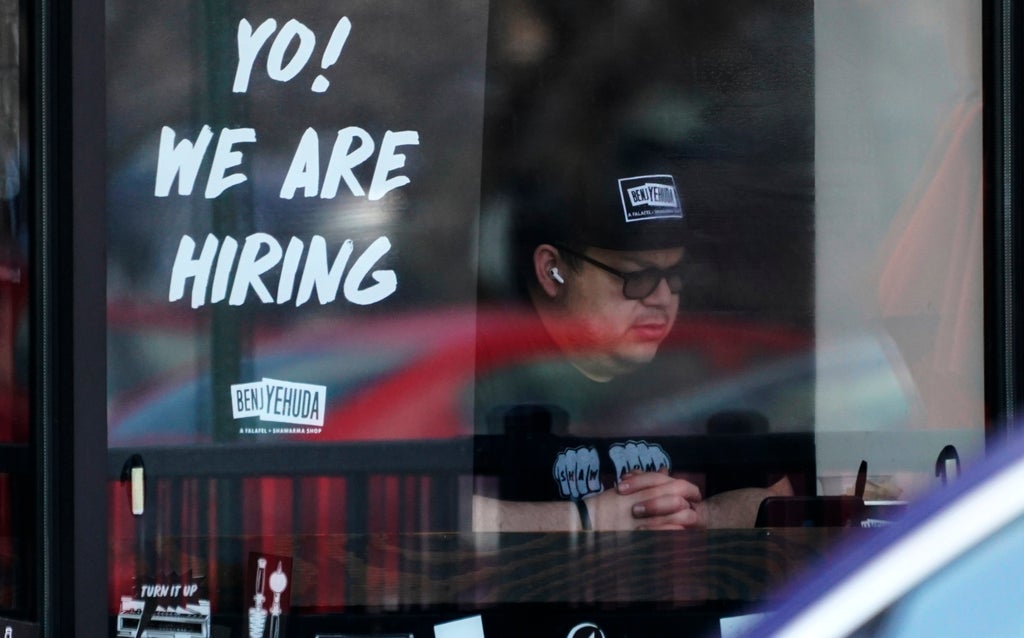
For the past year, America's job market has run like a well-engineered machine, adding an impressive average of 540,000 workers a month despite a punishing inflation rate, Russia's ruinous war against Ukraine, a still-risky pandemic, jittery financial markets and the prospect of much higher borrowing costs.
Hiring gains have topped 400,000 every month since May 2021.
And most economists think the winning streak has continued: According to a survey by the data firm FactSet, they expect Friday’s jobs report for April to show that employers added 400,000 more jobs last month. They have also forecast that the unemployment rate remained at 3.6%, a notch above a half-century low that was reached shortly before the pandemic struck two years ago.
The resilience of the job market is particularly striking when set against the backdrop of galloping price increases, rising borrowing costs and widespread fear that the Federal Reserve's sharp interest rate hikes will eventually trigger a recession.
“The labor market remains in solid shape as the spring quarter begins,’’ said Stuart Hoffman, senior economic adviser at PNC Financial. “Demand for labor is very strong ... Firms are competing for workers and bidding up wages.’’
This week, the Labor Department provided further evidence that the job market is still booming. It reported that only 1.38 million Americans were collecting traditional unemployment benefits, the fewest since 1970. And it said that employers posted a record-high 11.5 million job openings in March and that layoffs remained well below pre-pandemic levels.
What's more, the economy now has, on average, two available jobs for every unemployed person. That's the highest such proportion on record.
And in yet another sign that workers are enjoying unusual leverage in the job market, a record 4.5 million people quit their jobs in March, evidently confident that they could find a better opportunity elsewhere. In addition, over the past year, 3.8 million people have rejoined the labor force, meaning they now either have a job or are looking for one. Some of them had been on the sidelines for many months after the pandemic struck.
For all the sparkling signs of a healthy labor market, it's unclear how much longer the hiring surge will last. On Wednesday, the Federal Reserve raised its benchmark rate by a half-percentage point — its most aggressive move since 2000 — and signaled further large rate hikes to come. As the Fed’s series of rate hikes take effect, they will make it increasingly expensive for consumers to borrow, spend and hire.
Economists warn that those sharply higher borrowing costs could derail what has been a remarkably vigorous recovery from the COVID-19 recession, which wiped out 22 million jobs in March and April of 2020. The economic rebound that quickly followed was fueled by vast federal spending and ultra-low rates engineered by the Fed. Generous relief checks gave households the financial wherewithal to keep spending. And the rollout of vaccines emboldened them to return to shops, restaurants and bars.
But chronic shortages of goods, supplies and workers have contributed to skyrocketing price increases — the highest inflation rate in 40 years. Russia's invasion of Ukraine in late February dramatically worsened the financial landscape, sending global oil and gas prices skyward and severely clouding the national and global economic picture.
In the meantime, with many industries slowed by worker shortages, companies have been jacking up pay to try to attract job applicants and retain their existing employees: Hourly wages rose 5.6% in March from a year earlier — the third-largest monthly jump in Labor Department records dating to 2007.
Even so, pay raises haven't kept pace with the spike in consumer prices: Adjusted for inflation, hourly wages have actually fallen for 12 straight months.
That's why the Fed, which most economists say was much too slow to recognize the inflation threat, is now raising rates aggressively. Its goal is a notoriously difficult one: a so-called soft landing.
“Trying to slow the economy just enough, without causing a recession,'' said Rubeela Farooqi, chief U.S. economist at High Frequency Economics. “Their track record on that is not particularly good.''







